Dye Table Designs: Your Best Guide in 2025
Dye table designs can transform your home, art projects, or commercial spaces with unique and creative visuals. By following the right approach, you can create stunning pieces that reflect your style. Whether you’re new to dye table designs or looking to refine your technique, this guide will help you master the process and achieve the best results in 2024. Dye table designs combine art and technique, requiring careful planning and execution. From selecting the right materials to mastering application methods, every step is crucial. This guide will walk you through everything you need to know about dye table designs, ensuring you create beautiful and durable pieces.
Understanding Dye Table Designs
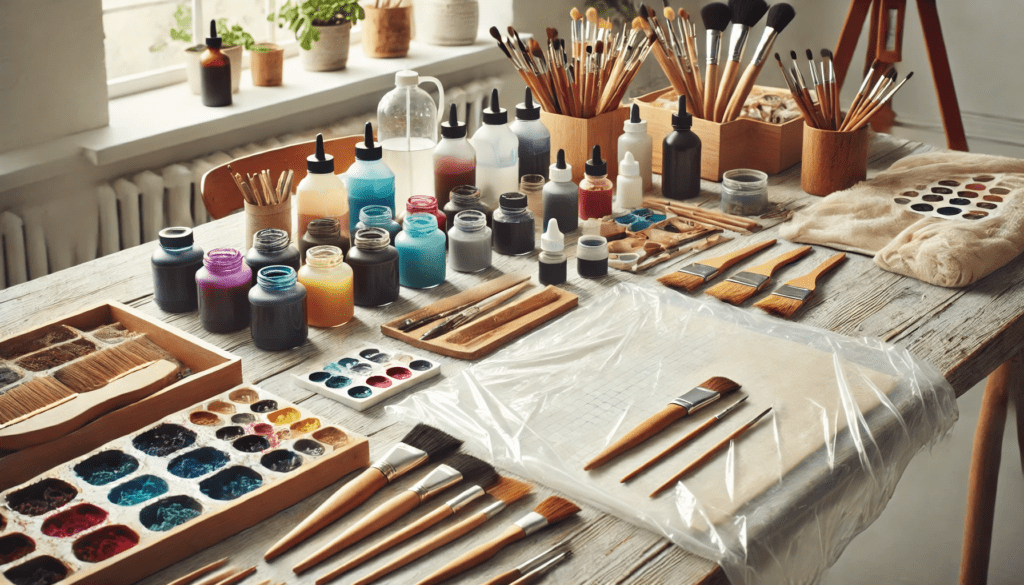
Dye table designs are a popular method for transforming ordinary tables into extraordinary works of art. By using dyes, you can create vibrant, custom designs that enhance the beauty and functionality of any table. The process involves several key steps, each requiring careful attention to detail to ensure the best possible outcome.
The Importance of Preparation
Proper preparation is essential for successful dye table designs. This includes selecting the right type of table, preparing the surface, and choosing high-quality dyes that will provide lasting color and durability. Preparation also involves gathering all necessary materials and setting up a workspace that will allow you to work efficiently and effectively.
Choosing the Right Table
When selecting a table for your dye table designs, consider the material, size, and intended use of the table. Wood is a popular choice due to its natural beauty and ability to absorb dye well. However, other materials, such as metal or plastic, can also be used with the right preparation and dye products.
Selecting High-Quality Dyes
The quality of the dye you use will have a significant impact on the final result of your dye table designs. Look for dyes that are specifically formulated for the type of material you are working with. High-quality dyes will provide vibrant, long-lasting color and will be easier to work with during the application process.
Step-by-Step Guide to Dye Table Designs
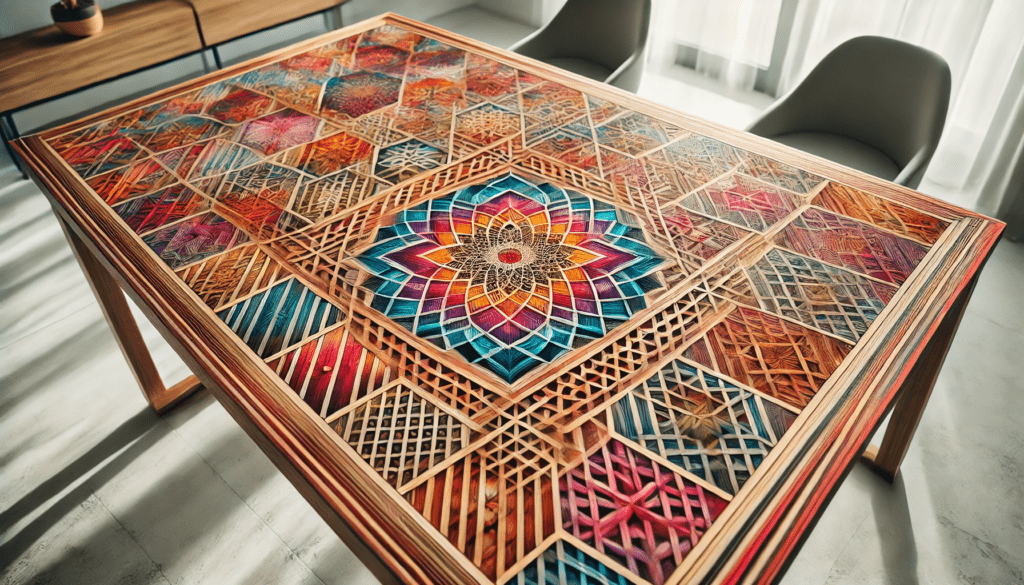
Step 1: Gather Your Materials
Before starting your dye table project, gather all the necessary materials. This includes:
- Dye in your chosen colors
- A sturdy table made of wood or a similar material
- Brushes or sponges
- Protective gloves and aprons
- A spray bottle filled with water
- Plastic sheets to cover your workspace
- Sandpaper or a sander
- Painter’s tape
- A pencil and ruler for sketching your design
Step 2: Prepare the Table Surface
Preparing the table surface is crucial for the dye to adhere properly. Clean the table thoroughly to remove any dust, dirt, or grease. Sand the surface if necessary to create a smooth, even base for the dye. Use painter’s tape to mask off any areas you do not want to dye.
Step 3: Choose Your Design
Select a design that complements your style and the table’s intended use. You can opt for geometric patterns, abstract designs, or even intricate landscapes. Sketch your design lightly on the table surface using a pencil. Use a ruler to ensure straight lines and symmetry in your design.
Step 4: Apply the Dye
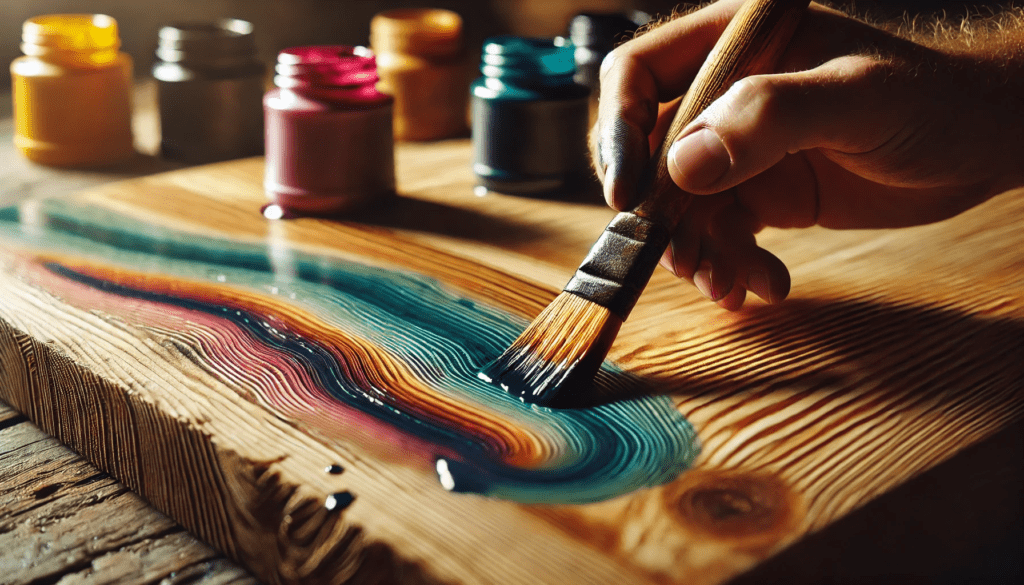
Start applying the dye to the table using brushes or sponges. Work in small sections to ensure even coverage and prevent the dye from drying out too quickly. Use the spray bottle to keep the dye moist if needed. Apply multiple layers of dye if necessary to achieve the desired color intensity.
Step 5: Blend the Colors
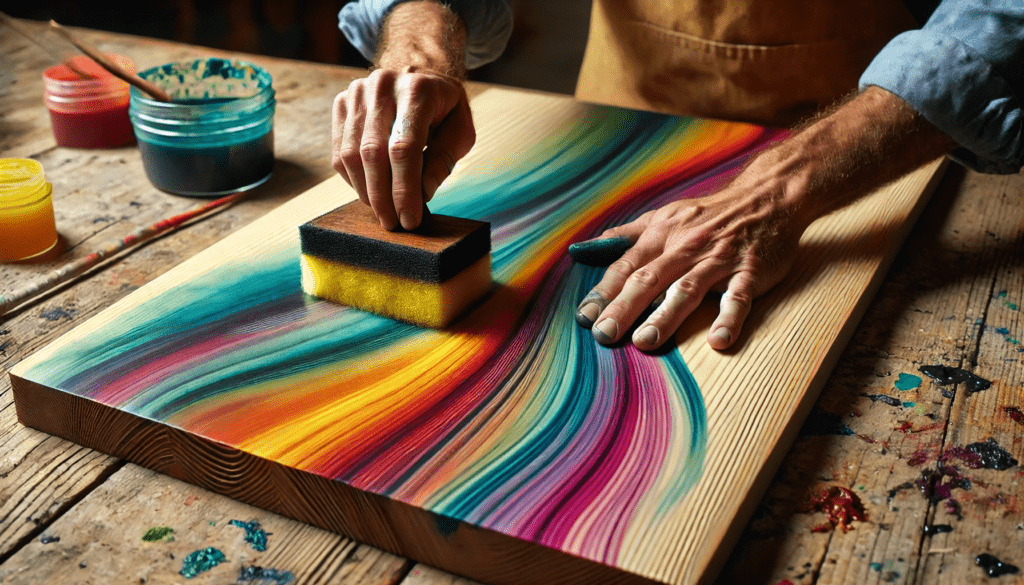
For a more dynamic and vibrant design, blend multiple colors. Use a sponge or brush to gently merge different shades, creating smooth transitions and gradients. Experiment with different blending techniques to achieve unique effects in your dye table designs.
Step 6: Let It Dry
Allow the dye to dry completely before applying any sealants or protective coatings. This can take several hours to a day, depending on the dye and environmental conditions. Make sure the table is in a well-ventilated area to speed up the drying process.
Step 7: Seal the Design
Once the dye is fully dry, apply a clear sealant to protect the design from wear and tear. This step is especially important if the table will be used frequently or exposed to moisture. Choose a sealant that is compatible with the type of dye you used and the material of the table.
Step 8: Final Touches
After the sealant has dried, inspect the table for any areas that may need touch-ups. Add any final details or embellishments to complete your dye table designs. Remove the painter’s tape and clean up your workspace.
Advanced Techniques for Dye Table Designs
Layering and Masking
Layering and masking are advanced techniques that can add depth and complexity to your dye table designs. By applying multiple layers of dye and using masking techniques, you can create intricate patterns and textures. Experiment with different types of masks, such as stencils or tape, to achieve a variety of effects.
Marbling
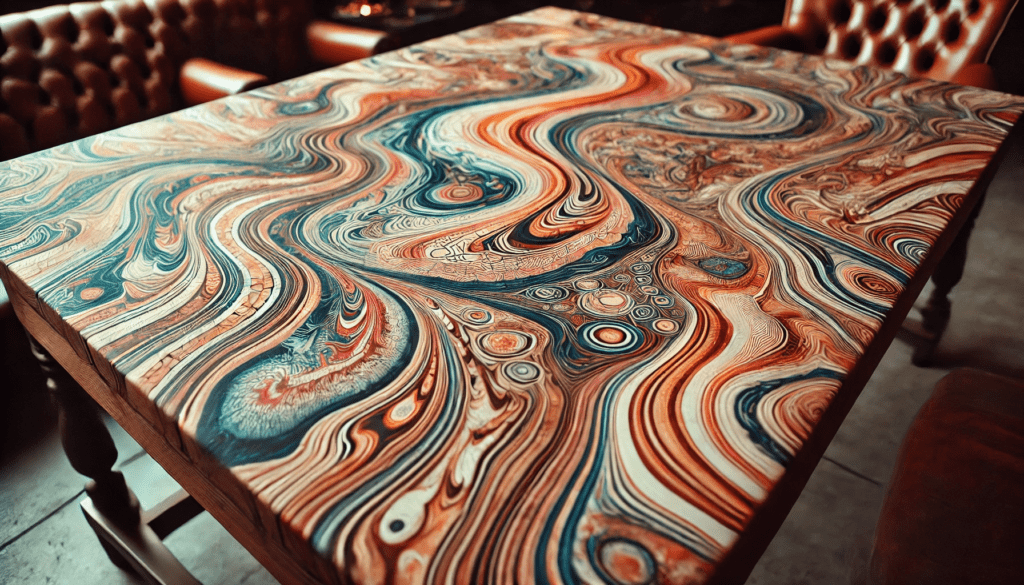
Marbling is a technique that involves creating a swirled, marble-like pattern on the surface of the table. This can be achieved by blending multiple colors of dye while they are still wet. Use a comb or other tool to create the desired pattern in your dye table designs.
Ombre

Ombre is a technique that involves creating a gradient effect, where one color gradually fades into another. This can be achieved by blending different shades of dye. Experiment with different color combinations and blending techniques to create unique ombre effects in your dye table designs.
Stenciling
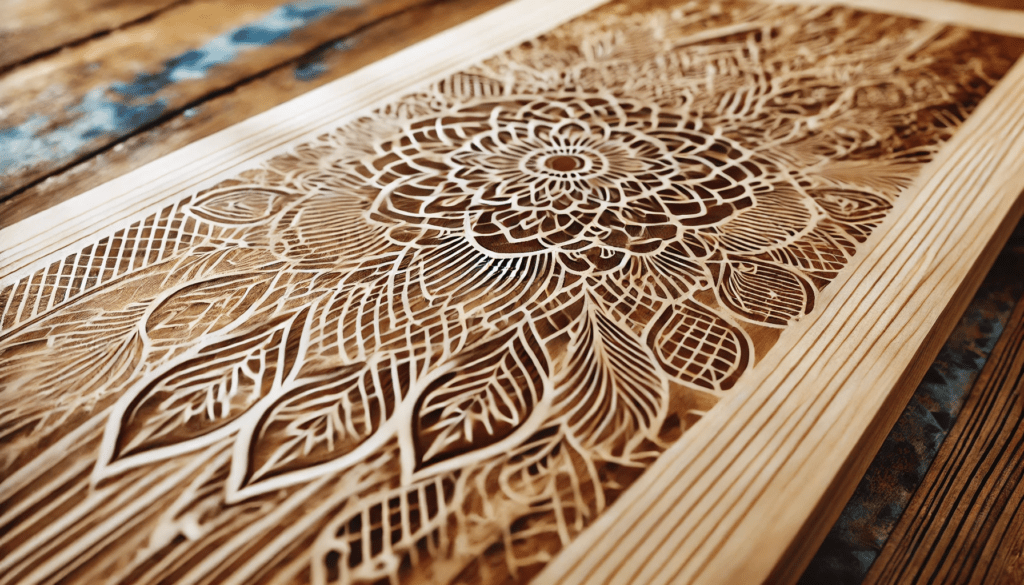
Stenciling is a technique that involves using stencils to create precise, detailed patterns on the surface of the table. This can be achieved by applying dye over a stencil and then removing the stencil to reveal the design. Use stencils to add intricate details and embellishments to your dye table designs.
Resist Dyeing
Resist dyeing is a technique that involves using a resist material, such as wax or glue, to create patterns on the surface of the table. The resist material prevents the dye from adhering to the table, creating a contrast between the dyed and undyed areas. Experiment with different resist materials and application techniques to achieve a variety of effects in your dye table designs.
Common Challenges and Solutions
Uneven Dye Coverage
Uneven dye coverage is a common challenge when creating dye table designs. This can be caused by a variety of factors, including improper surface preparation or inconsistent application of the dye. To achieve even coverage, make sure to thoroughly clean and sand the surface of the table before applying the dye. Apply the dye in thin, even layers, and use a brush or sponge to blend the dye as needed.
Fading Colors
Fading colors can be a problem if the dye is not properly sealed or if the table is exposed to excessive sunlight or moisture. To prevent fading, choose high-quality dyes and sealants that are designed for long-lasting color. Apply the sealant according to the manufacturer’s instructions, and avoid placing the table in areas with direct sunlight or high humidity.
Bleeding Colors
Bleeding colors can occur when different colors of dye mix together unintentionally. To prevent bleeding, make sure to apply each color separately and allow the dye to dry completely before applying additional layers. Use painter’s tape or other masking techniques to separate different areas of the design.
Difficulty Achieving Desired Color
Achieving the desired color can be challenging, especially when working with multiple layers of dye. To achieve the desired color, experiment with different dye combinations and application techniques. Apply multiple layers of dye if necessary, and use blending techniques to create smooth transitions between colors.
FAQs
How Long Does It Take to Complete a Dye Table Design?
The time required to complete a dye table design can vary greatly depending on several factors, including the complexity of the design, the number of colors used, and the drying times for the dye and sealant. Typically, a simple dye table design might take a few days, while a more intricate design could take up to a week or more. It’s essential to plan your project accordingly to ensure you have enough time to complete each step without rushing. Each layer of dye needs adequate drying time, and applying the sealant can add additional days to the process. Proper planning and patience are key to achieving beautiful dye table designs.
Can I Use Any Type of Dye for My Table?
Not all dyes are suitable for every type of material, and using the wrong type of dye can lead to unsatisfactory results. For dye table designs, it’s best to use dyes specifically formulated for wood or fabric, as these are designed to penetrate the material and provide long-lasting color. Wood dyes are typically more vibrant and durable, ensuring that your dye table designs will stand the test of time. Avoid using general-purpose dyes or those not intended for the specific material of your table, as they may not adhere properly or could fade quickly. Choosing the right dye is crucial for successful dye table designs.
How Can I Ensure My Design Lasts?
To ensure the longevity of your dye table designs, it’s vital to apply a high-quality sealant after the dye has dried completely. The sealant protects the dye from wear and tear, moisture, and UV light, which can cause fading over time. It’s also essential to avoid placing the table in areas with excessive moisture or direct sunlight. Depending on the usage of the table, you may need to reapply the sealant periodically to maintain its durability and appearance. Using a sealant compatible with the dye and material of your table will help preserve your dye table designs for years to come.
What Are Some Popular Design Trends for Dye Table Designs in 2024?
Dye table designs are constantly evolving, with new trends emerging each year. In 2024, some popular design trends include geometric patterns, abstract designs, and nature-inspired motifs. Geometric patterns provide a modern and sophisticated look, while abstract designs allow for more creativity and expression. Nature-inspired motifs, such as floral patterns or landscapes, can add a calming and organic feel to your table. Experimenting with different color combinations and techniques, such as blending or layering, can help you create unique, personalized dye table designs that reflect your style and stay on-trend.
Can I Use Dye Table Designs for Outdoor Furniture?
Yes, dye table designs can be used for outdoor furniture, but it’s essential to choose dyes and sealants that are specifically formulated for outdoor use. These products are designed to withstand the elements, providing better protection against moisture, UV light, and temperature fluctuations. When creating dye table designs for outdoor furniture, ensure that the sealant provides a durable barrier to protect the dye. Additionally, it’s a good idea to place outdoor furniture in shaded or covered areas to further protect the design from harsh weather conditions and prolong the life of your dye table designs.
How Do I Clean and Maintain My Dyed Table?
Proper cleaning and maintenance are crucial to preserving the beauty and durability of your dye table designs. To clean your dyed table, use a soft cloth and mild soap and water. Avoid using harsh chemicals or abrasive cleaners, as these can damage the dye and sealant. Gently wipe the surface to remove dust and dirt, and dry it thoroughly. Regularly inspect the table for any signs of wear or damage, and reapply the sealant as needed to maintain its protective barrier. With proper care, your dye table designs will remain vibrant and beautiful for many years.
Can I Remove or Change a Dye Table Design?
Yes, you can remove or change a dye table design if you wish to update or completely change the look of your table. To remove the existing dye, sand the surface of the table to strip away the dye and sealant. Once the surface is smooth and clean, you can start applying a new design using the steps outlined in this guide. Keep in mind that removing the dye may alter the surface of the table, so you may need to sand and refinish the table before applying the new design. Changing your dye table designs allows for endless creativity and customization.
What Are Some Common Mistakes to Avoid When Creating Dye Table Designs?
Creating dye table designs can be a rewarding process, but there are some common mistakes to avoid to ensure the best results:
- Skipping Surface Preparation: Properly clean and sand the table to ensure the dye adheres properly. Skipping this step can result in uneven coverage and poor adhesion.
- Using Low-Quality Dyes or Sealants: Choose high-quality products to ensure long-lasting color and durability. Inferior products may not provide the desired results and can fade or wear quickly.
- Applying the Dye Too Thickly: Apply thin, even layers of dye to avoid streaks and uneven coverage. Thick layers can take longer to dry and may result in blotchy areas.
- Not Allowing Enough Drying Time: Allow the dye and sealant to dry completely between steps to avoid smudging or bleeding. Rushing the process can ruin the design.
- Not Experimenting with Different Techniques: Try different blending, masking, and layering techniques to achieve unique effects in your dye table designs. Experimentation can lead to more innovative and creative results.
By avoiding these common mistakes, you can ensure your dye table designs turn out beautifully and last for years to come.
Conclusion
Dye table designs offer endless possibilities for customization and creativity. By following the steps outlined in this guide, you can create stunning and durable designs that will enhance any space in your home or workplace. These techniques allow you to transform a simple table into a unique piece of art that reflects your personal style and artistic vision. The beauty of dye table designs lies in their versatility—you can create anything from bold, geometric patterns to delicate, nature-inspired motifs.
Remember to experiment with different colors and techniques to find what works best for you. Try blending multiple colors for a dynamic look, or use stencils to add intricate details. The more you experiment, the more you’ll discover the endless creative possibilities that dye table designs offer. Don’t be afraid to try new methods and materials to achieve the perfect look for your project.
For more inspiration and detailed instructions, check out our articles on drawing on hand ideas with pen and diy felt hat. These resources provide additional tips and ideas that can be adapted for your dye table designs. Additionally, websites like DIY Network and Home Depot offer a wealth of resources, tutorials, and materials for your projects, ensuring you have everything you need to get started.
By following this comprehensive guide on dye table designs, you’ll be well-equipped to create beautiful, customized tables that reflect your unique style. Whether you’re a beginner or an experienced DIY enthusiast, this guide provides the knowledge and inspiration you need to make your dye table designs truly exceptional. Enjoy the process, and watch as your creative vision comes to life!
